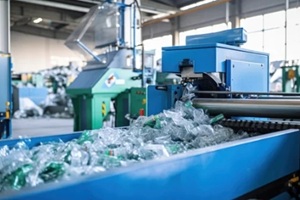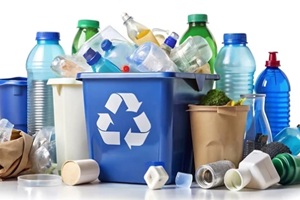March 27, 2025

The global plastic waste crisis has escalated to an urgent point, with millions of tons of discarded plastics severely polluting oceans, landfills, and ecosystems every year. The need for immediate action is undeniable.
Despite widespread awareness and advancements in recycling technologies, the actual rates of plastic recycling remain low, particularly for commonly used materials like PET (polyethylene terephthalate) in beverage bottles.
Clear communication plays an important role in addressing the confusion surrounding plastic recycling. A significant number of consumers are unsure about the recyclability of different plastics and the correct way to prepare them for recycling, which often leads to contamination in recycling streams and reduces the effectiveness of recycling programs.
Educational campaigns and better labeling of plastic products can bridge this knowledge gap. Simple, consistent information about recycling codes and symbols can make a significant difference. For example, many people don’t understand the numbers within the triangular recycling symbols are resin ID codes which indicate the type of plastic it’s made of. Clarifying these codes with plain language or simplified labeling systems could help consumers make informed decisions.
Public awareness initiatives that target schools, communities, and workplaces could further empower individuals to participate in recycling programs. People are more likely to embrace habits that increase recycling rates and reduce waste contamination when they see the direct results of their actions.
Advanced recycling technologies offer promising solutions to help tackle plastics that are traditionally harder to recycle. Innovative methods, including chemical recycling and AI-powered sorting systems, can process materials that standard recycling facilities struggle to handle, such as mixed or contaminated plastics. Transforming waste into valuable resources, these innovations reduce the necessity for landfill usage and incinerators.
Local governments and businesses play a valuable role in advancing these innovations. Their investment in infrastructure and collaboration with technology developers can significantly boost the adoption of advanced recycling methods. Additionally, government support in recognizing advanced recycling as a form of recycling, rather than manufacturing, is essential to fostering progress in this field.
For example, pyrolysis, a cutting-edge process, converts plastic waste into fuel or raw materials for new products. With the ability to repurpose discarded plastics, this technology supports the development of a more eco-friendly waste management system.
Supporting such initiatives strengthens recycling programs while also demonstrating a greater commitment to innovation, creating a better future where plastic waste is seen as an opportunity rather than a problem.

Businesses have a significant opportunity to improve recycling rates and reduce plastic waste through strategic initiatives. Take-back programs, in which companies collect used products or packaging from consumers, provide a direct way to increase recycling and reduce waste entering landfills. Incorporating recycled plastics into manufacturing processes also helps close the loop on materials, creating demand for recycled content.
Adopting sustainable packaging solutions is another impactful step that can help improve existing plastic recycling efforts. Companies can minimize waste by designing packaging that is easier to recycle or made entirely from recycled materials.
Some brands have successfully implemented closed-loop supply chains, reusing materials from their products to create new ones. For instance, beverage companies that collect and process used bottles to produce new ones demonstrate how businesses can lead change within their industries. Collaborating with the World Wildlife Fund to better understand and correct impact, Coca-Cola, Pepsi Co., and Keurig Dr. Pepper are some of the larger corporations working toward reducing the use of new plastic in their bottles.
Motivating consumers to recycle can significantly increase participation rates and reduce plastic waste. Proven to promote recycling, deposit return programs require consumers to pay a deposit on bottles that are refunded when they’re returned. Taking advantage of these programs makes recycling a straightforward and rewarding habit, driving higher collection rates.
Reward-based initiatives also help drive other eco-friendly behaviors, further advancing the cause. Offering discounts or credits for participating in sustainable practices creates an immediate incentive.
For example, reverse vending machines, which accept used plastic bottles and provide credits or cash in return, have gained popularity in several countries. Making recycling simpler and more appealing, these machines improve both accessibility and promote greater user engagement.
Consumer-focused strategies tap into people’s willingness to contribute when their actions yield tangible benefits. With the right systems in place, recycling can become a convenient and rewarding part of everyday life, leading to cleaner waste streams and higher material recovery rates.

Improving plastic recycling rates demands a comprehensive strategy that combines education, advanced technologies, corporate accountability, and consumer engagement. Every element plays a critical role in creating a recycling system that is both economically efficient and environmentally sustainable. Clear communication about proper recycling practices, investment in innovative methods, and incentivizing businesses and individuals are essential to reducing plastic waste and enhancing material recovery.
To spotlight these efforts, initiatives like “Recycling is Real” (recyclingisreal.com) provide valuable resources and education to help communities better understand the impact of recycling. Additionally, the Flexible Film Recycling Alliance (FFRA) has recently launched a consumer film recycling directory (ffra.org), making it easier for individuals to participate in recycling programs specific to flexible plastics.
Everyone has a role to play. Communities can launch awareness campaigns, organizations can implement sustainable practices, and individuals can make informed decisions about recycling and consumption. When embraced broadly, even small actions can lead to significant progress.
For more insights and resources, explore PLASTICS, the Plastics Industry Association. Their newsletters, tools, and expertise cover a wide range of topics related to the global plastics industry. Join today to become part of a network driving innovation and sustainability in plastics—together, impactful change is within reach.
PLASTICS and the Future Leaders in Plastics (FLiP) Committee are devoted to supporting and encouraging the next generation of plastics leaders who will play a crucial role in the innovation, technology and future of the plastics industry. FLiP’s mission is to provide young professionals under the age of 40 the exposure, education and resources they need to build lifelong careers in plastics. Want to join? Want to get your employees involved? Email: flip@plasticsindustry.org